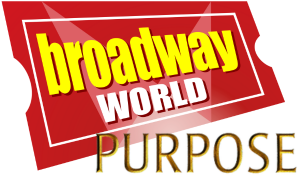Interview: Playwright Larissa FastHorse on FAKE IT UNTIL YOU MAKE IT
On stage at the Mark Taper Forum through March 9.
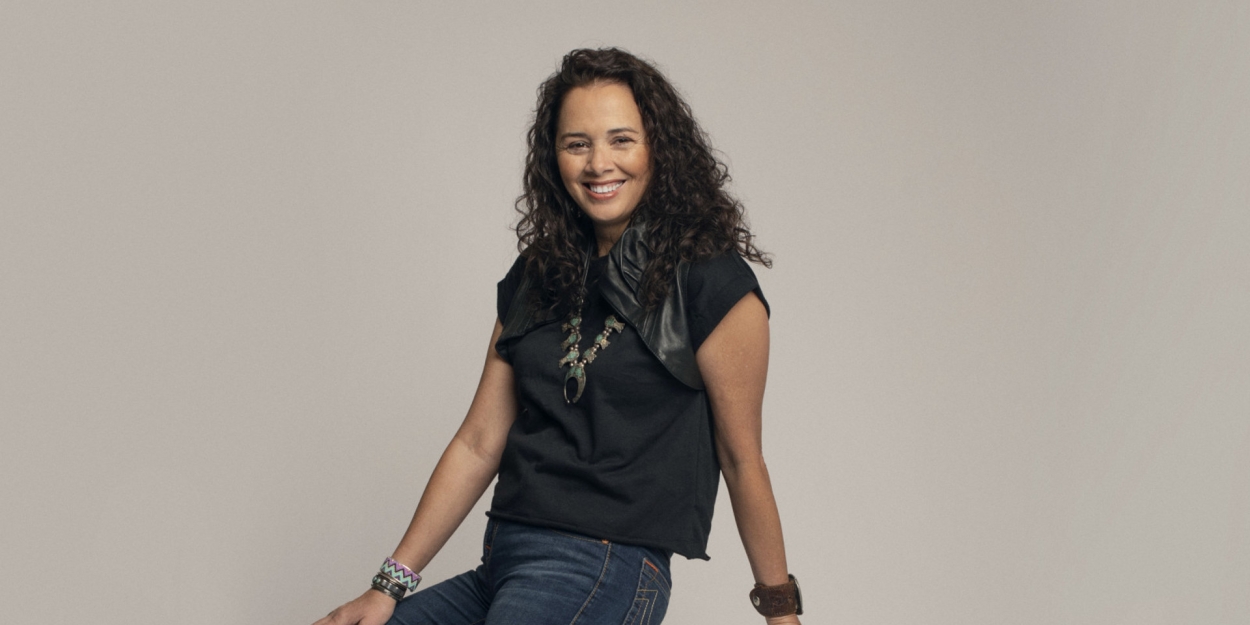
Center Theatre Group is presenting the world premiere of Fake It Until You Make It, a farce by LA based Larissa FastHorse (pictured), the first Native American playwright to be featured at the Mark Taper Forum through March 9. I decided to speak with her about her life in the Sicangu Lakota Nation, what led her to create the play, the challenges faced to getting the play produced, the importance of being the first Native American playwright to be featured at the venue, and what messages she hopes to bring to audiences about Native American heritage.
Thanks, Larissa for speaking with me today. First of all, tell me about your background in the theatre world.
I am currently represented with the revised book of the touring musical Peter Pan, and am first known female Native American playwright on Broadway with The Thanksgiving Play, one of the most produced plays in the country. Additional plays include The Native Nation Trilogy, For The People, and Fancy Dancer.
Since I have not seen The Thanksgiving Play, your work is new to me. But I did see the updated Peter Pan musical that was performed here, and wanted to talk about your involvement updating the image of Tiger Lily.
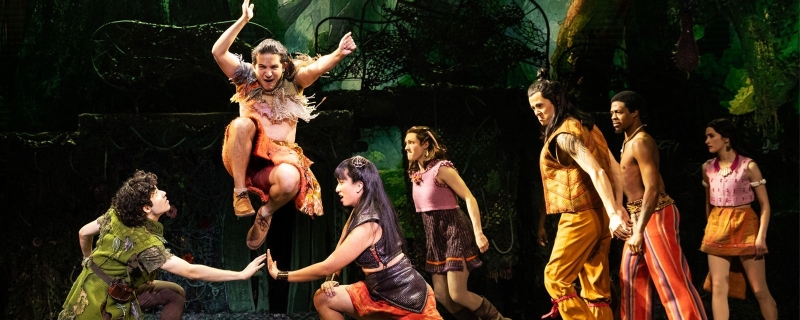
(from L) Nolan Almeida as Peter Pan, Kenny Ramos as Acoma, Raye Zaragoza as Tiger Lily and the cast of Peter Pan. Photo credit: Matthew Murphy for MurphyMade
Yes, I wrote that show. The producers reached out to me to do it. The director Lonny Price was already onboard but we did not know each other yet. But he had read my work and as soon as we met to talk about it, we knew we wanted to work together as we have a shared vision on how we work and wanted to be respectful of the original concept but make it more relevant to today’s audiences.
I really appreciated that as it made her a modern woman and not the outdated, stereotypical characterization of her in the original story. Thank you for that.
It’s much easier for me to write about strong female characters. A bigger job was taking an hour out of the show and an intermission, which was much more challenging.

Dakota Ray Hebert, Brandon Helsid, Tonantzin Carmelo
Fake It Until You Make It photo credit: Makela Yepez
I know you are based in Los Angeles now. But were you born here?
I was born into the Sicangu Lakota Nation in South Dakota. My father is a full-blooded Lakota and FastHorse is our family name. But in the Lakota nation, your name would change throughout your life as you matured.
I hate to say it, but I know only a little about the Lakota Nation from seeing Dancing With Wolves. But it did open my eyes to the goodness and caring nature of the Lakota people and the way they lived in touch with nature.
Don’t be sorry! Of course it had a lot of issues in it. But it employed a lot of Indigenous people at a time when that wasn’t done very often.
When did you co-found Indigenous Direction, the leading consulting company for Indigenous art?
About 7-8 years ago.
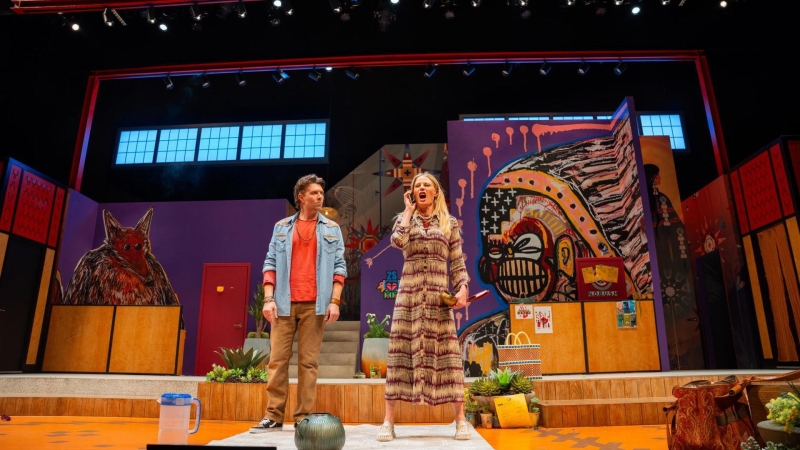
Noah Bean and Julie Bowen
Photo credit: Makela Yepez
Since your company does consulting work on Indigenous art, did it have anything to do with your creative and artistic scenic design by Sara Ryung Clement for Fake It, which was so colorful and allowed all that crazy movement to go on within it?
CTG hired us to come in and do a good amount of consulting with the staff, crew and all the folks working around the show. So they had a good grounding of how to look for native art and employed an Indigenous artist, but we had to make sure it reflected the culture of Southern California.
Such as?
The basket weaving designs are very specific to a family, for instance. We needed to be sure to not just license a piece from a museum, which many museums have, without knowing if the design was owned by people of this region. So, we needed to find the family history first of any pieces we used in the show. And we hired a local artist to weave the baskets in the show.
.jpg)
Eric Stanton Betts and Brandon Delsid
Photo credit: Makela Yepez
Being careful about basket weaving patterns is the same as how beads are strung, the look of porcupine quill work, and so many other things that if not licensed properly, it will be very upsetting to Indigenous families. A museum or a fashion designer may acquire a piece, but they don’t own the weave design which may belong to a family, clan or a tribe. The design is separately licensed from the art piece itself, especially if it’s going to be duplicated for promotional purposes.
As a former teacher myself, what does it mean to be a professor of practice at Arizona State University?
They are better known in the legal and medical fields where you have a professor of practice in that field where a doctor or lawyer is still practicing their skills and also sharing that knowledge in some way with the outside world through education. They are not full-time professors since they are still practicing their work outside of teaching about it. And now it’s becoming more and more common to have artists as professors of practice. We practice our craft to make a living and share that craft in the university setting on a part-time basis.
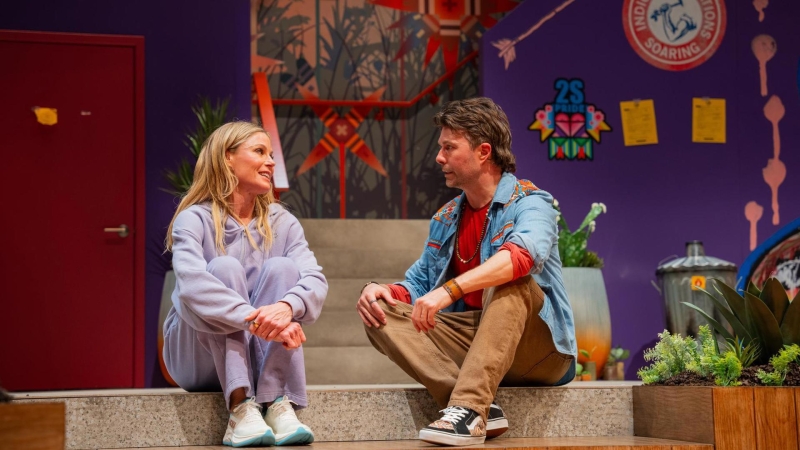
Julia Bowen and Noah Bean
Photo credit: Makela Yepez
Let’s talk about the creation of your play Fake It Until You Make It. When you envisioned it, who did you see as your target audience?
I was commissioned by CTG to write it so I was thinking about their typical audiences; their subscribers and those who purchase single tickets for shows. And I know them well since I am one of them! CTG has a very large single-ticket audience.
I think that’s true in most theater companies; their subscribers seem to be an older group of patrons and single-ticket buyers tend to be younger. But I suppose all that is changing now since people are more careful to only spend money on shows they really want to see.
I’m not sure. But we are seeing across the board that subscribership is not the model anymore, and so we are relying more on single-ticket buyers.
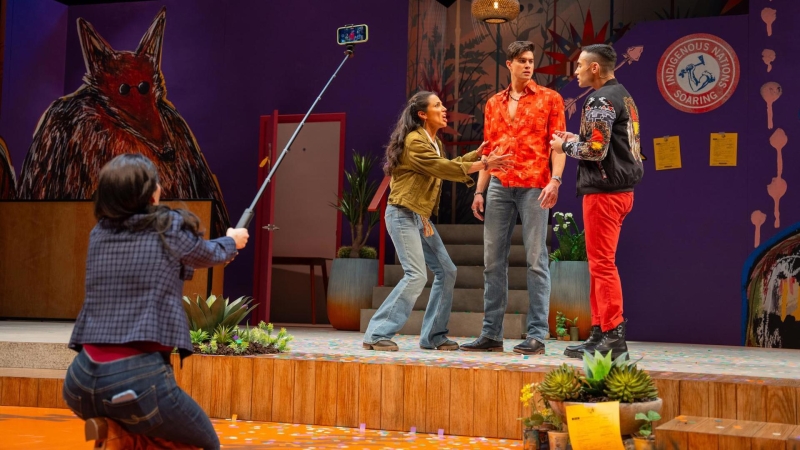
Dakota Ray Hebert, Tonantzin Carmelo, Eric Stanton Betts and Brandon Delsid
Photo credit: Makela Yepez
Since the play was originally commissioned by Center Theatre Group, did you reach out to them or did they reach out to you?
Michael Ritchie from CTG originally reached out to me. Had they not, it probably would not have been done. It was originally co-commissioned with Carole Rothman of Second Stage for the Hayes.
What were the challenges faced to getting the world premiere of the play produced with Center Theatre Group at the Mark Taper Forum?
It was originally commissioned for their 22-23 season featuring all women writers. And I was asked if I could fast-track the play to get into the end of that season. But Second Stage did not have a spot to do they play then, so it was being done just for CTG. So, they gave me another piece to do for them later.
But after Michael left and Senai Desai took over as CTG Artistic Director, the decision was made to pause performances at the Mark Taper Forum and re-group; so my play did not get done that season. And we were two weeks into rehearsals when that decision was made. And now that we have had an additional year and a half to work on the piece, it’s gotten stronger and stronger.
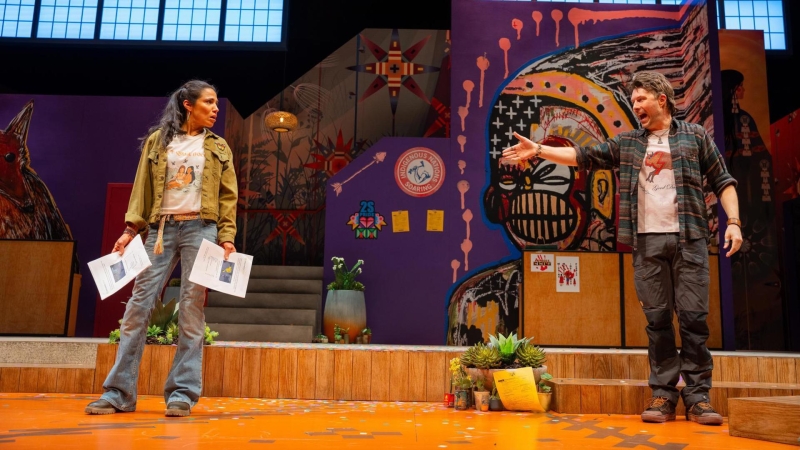
Tonantzin Carmelo and Noah Bean
Photo credit: Makela Yepez
How did Arena Stage in Washington DC get onboard as a co-producer of the play?
When we found out the play was not going to be happening in Los Angeles during the 22-23 season, and since I own the piece as the playwright, I sent it out to a lot of Artistic Directors around the country. And Hana Sharif at Arena Stage immediately said that she wanted to produce it in her first season. So that was very exciting.
And we did not know for quite some time if they were going to have another Mark Taper season at CTG, so we had to wait and see. So when the decision was made to re-open, CTG then became a co-producer and Fake It Until You Make It is being presented by both companies. And I have known Senai and Hana for quite some time and consider them personal friends. So, we are all pulling for everyone to make this happen and be successful!
You have worked with director Michael John Garcés for thirteen years. Why do you trust him to tell your stories authentically, since he is not an Indigenous person?
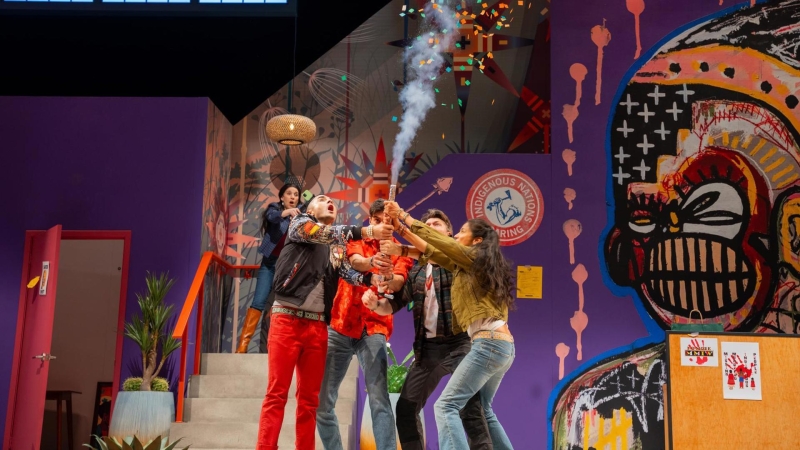
Dakota Ray Hebert, Brandon Delsid, Eric Stanton Betts, Noah Bean and Tonantzin Carmelo
Photo credit: Makela Yepez
He originally commissioned me from Cornerstone Theatre Company, and what’s really special about Michael as a director and collaborator is that he worked with Indigenous people when he commissioned me. He is Cuban and grew up in Columbia, and so he has a real interesting outsider perspective on my work, how it’s seen and how it’s done. And since he was not born American, his viewpoint as someone who came here as an adult is very helpful to me. He calls me out if I assume something I am writing is universal but really is just an “American thing.”
He really has an insider/outsider point of view, and sees the way my work will be viewed by non-Indigenous people. He has such an open and generous way to work with native people that he has no ego in the work. He is all about serving the community and these voices in a way I have not seen elsewhere. We also share a great sense of style. And he is a great playwright himself, so I admire the way he thinks and breaks down my script.
Please share about the Fake It Until You Make It story.
Fake It Until You Make It takes an absurd look at what defines who we are, and the lengths some people will go through to change it. It centers around a collision of friends and foes within the non-profit sector which sets the stage for a whirlwind of competition, chaos, and comedic revelation.
When you first started writing it, did you realize how frenetic a farce it would become?
We certainly hoped so! I like things to move quickly at the speed of life.
The “speed of life.” I love that! Tell me about the characters and how do they interact with each other to tell the story.
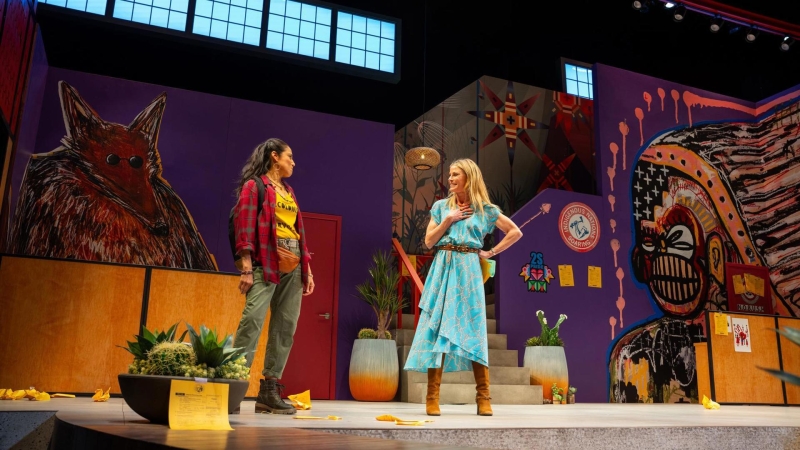
Tonantzin Carmelo and Julie Bowen as Wynona and River
Photo credit: Makela Yepez
In it, you meet Wynona, the Native American proprietor of N.O.B.U.S.H., and River, her white counterpart at Indigenous Nations Soaring. Their escalating rivalry ensnares colleagues and bystanders, leading to the unraveling of secrets that highlight the absurdities of ambition and authenticity, as well as the fragile yet ruthless underbelly of the nonprofit sector, where co-working and Culture Clash. Amidst the laughter, genuine connections form, emphasizing the value of unexpected paths to success.
I have to say it was a bit tough for me, getting to like the characters and then feeling like the rug was pulled out from under me when it turned out they were faking a lot about themselves. I assume that was intentional.
Absolutely. I like extremely complicated folks and while I write comedies and this farce so people can have a good time, at the same time I also like to talk about true and difficult things. There is no winning. There is no right. There is no fix about what has happened. Millions died from genocide and still do today. There doesn’t need to be a happy ending to this. Sure I want people to have fun but, as a writer, it’s too easy to make one person the hero and one the villain. I think everyone has both sides in them. I really try to keep that point of view in my work.
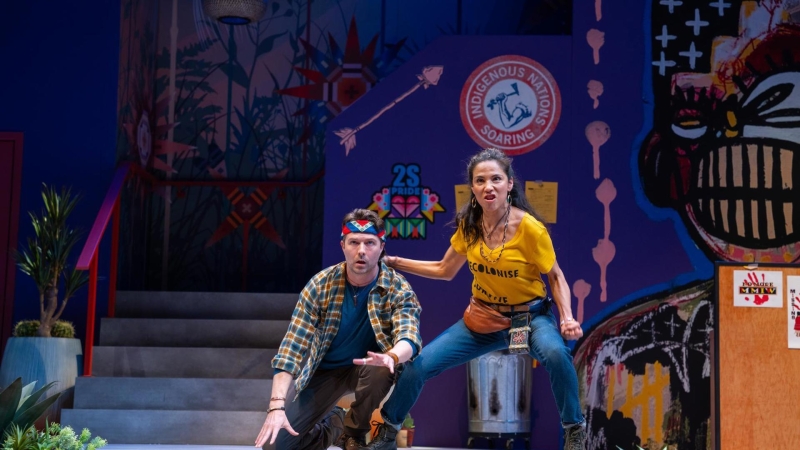
Noah Bean and Tonantzin Carmelo
Photo credit: Makela Yepez
It certainly led to a lot of conversations after the performance on the night I attended! And I bet they are still talking about it and trying to figure out exactly what happened. I think we all felt so confused.
Yay! That makes me so happy! I wanted you to wrestle with these things and really think about them. And I don’t have the answers for you. It’s so important that people struggle with it and I suspect most people have not thought about these things before. Of course it’s going to be confusing. I hope everyone had a good time, but I don’t want to make it too easy.
The cast at the Mark Taper Forum includes Noah Bean (Theo), Eric Stanton Betts (Mark), Julie Bowen (River in Los Angeles), Amy Brenneman (River in Washington DC), Tonantzin Carmelo (Wynona), Brandon Delsid (Krys), and Dakota Ray Hebert (Grace). What led to the decision to double cast the role of River?
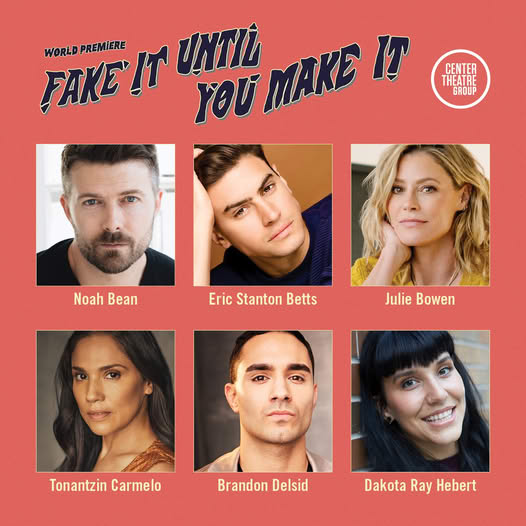
We actually developed the play with Amy from the beginning, but she was working on The Old Man series on FX from 2022 to 2024. So in the interim, we were able to work with Julie Bowen, a comedic genius, but she has children and was not able to go to do the DC shows. So it worked out perfectly that we get to work with both of them. It was kismet when Amy let us know The Old Man run was ending and she was available to do the play in DC.
Have you worked with any of the other actors previously?
Brandon Delsid who plays Krys was part of the development team, and I worked with Tonantzin Carmelo before in my first play at the Autry (Native Voices). I worked with Noah Bean, who plays Theo, when he appeared in The Thanksgiving Play at the Geffen. And I actually wrote the role of Theo with him in mind. Only Eric and Dakota are new to us.
Since Julie and Tonantzin are at odds throughout the play as River and Wynona, had they ever met before? They seemed so natural together, as if old friends.
No they hadn’t. This was the first time they worked together. Only Julie and Noah had worked together briefly in the past. But Julie did not know anyone else in the cast.
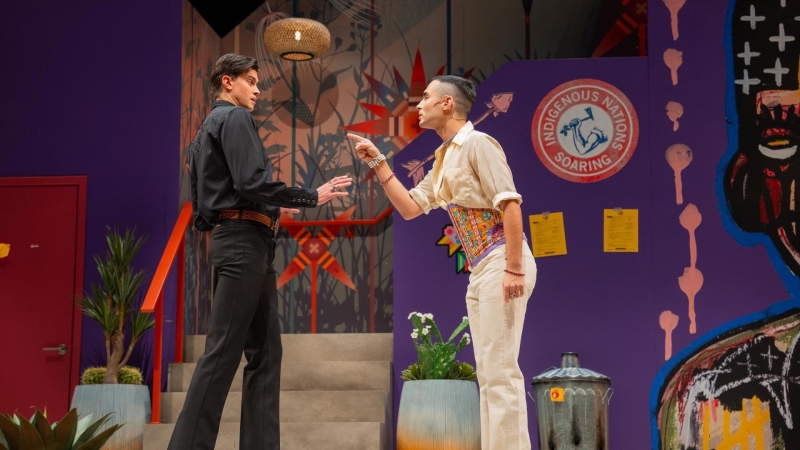
Eric Stanton Betts and Brandon Delsid
Photo credit: Makela Yepez
What messages do you hope to bring to audiences about Native American and/or non-profit sector culture?
I think people will be surprised how true things are in the play. How incredibly common it is for well-funded non-profit organizations to be run by non-native folks and how difficult it is for Indigenous people to be trusted to be in charge. Michael and I do a lot of fundraising for groups in South Dakota and it’s astounding the hoops Native American organizations have to jump through compared to white-led groups that do the same work with the same budgets. It’s so very common and so unfortunate not to be on level playing fields. Everyone is trying to serve the public but it’s being done in such a biased way. I hope people see that in my play.
It's very complicated how everyone else views a different culture, judging them without knowing them.
So true.
You must feel very important being the first Native American playwright to be featured at the Mark Taper Forum to talk about these issues.
For sure, I feel honored. But it’s also a little disappointing - it’s 2025 so why am I the first one?
Let’s not get into politics or we will be talking for another two hours! But your goal to make the audience feel uncomfortable was certainly achieved.
Thanks – I’ll take that!
Anything else you’d like to share about yourself or the play?
We are taking the play to DC next. And I am working on other commissions across the country. Plus there is a lot in development and a couple of TV shows.
Thanks for all you do to keep diversity, which is what America is all about, in the Arts and our minds. Not everyone may understand your voice, but it certainly gets people thinking and talking while having fun.
Thanks so much!
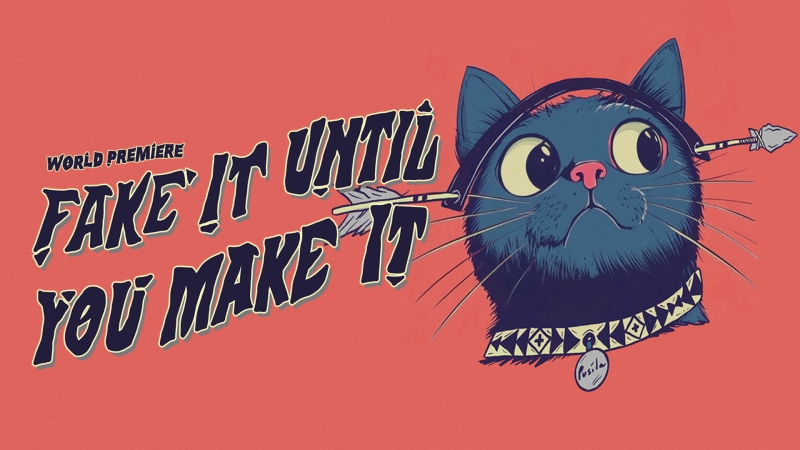
Fake It Until You Make It runs January 29 to March 9 on Tuesday through Friday evenings at 8:00 p.m.; Saturdays at 2:00 p.m. and 8:00 p.m.; Sundays at 1:00 p.m. and 6:30 p.m. Tickets start at $35, available through CenterTheatreGroup.org, Audience Services at 213.972.4400 or in person at the Center Theatre Group Box Offices at The Music Center, 135 N. Grand Avenue in Downtown LA 90012. Center Theatre Group offers several services to accommodate persons requiring mobility, vision, and hearing access. For more information, please visit CenterTheatreGroup.org/Access.
Following the Taper run it transfers to Arena Stage in Washington DC beginning April 3 to May 4. For more information and tickets, visit https://www.arenastage.org/tickets/2024-25-season/fake-it-until-you-make-it/.
Comments

Videos
